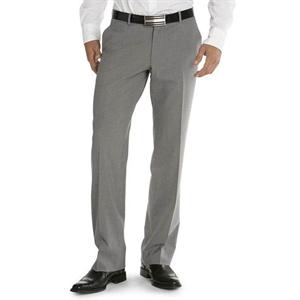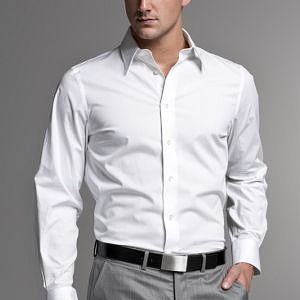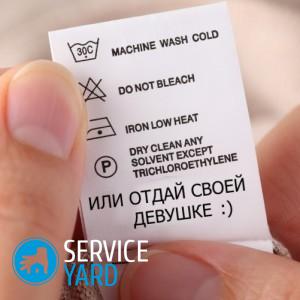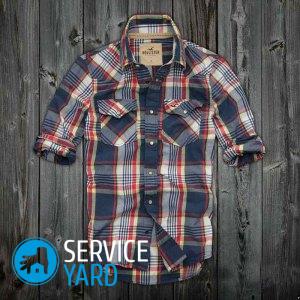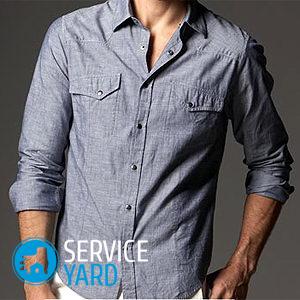How to iron a jacket?

A classic jacket is an indispensable thing in the wardrobe of not only men, but also business women. A business suit is the only suitable clothing for special occasions, and since the proverb says “meet by clothes”, it will not be out of place to know how to iron a jacket.
Maybe someone will say that there is nothing complicated in this process. However, folds that once appeared on the jacket may not be smoothed out. In addition, if you iron the jacket incorrectly, there is a risk of making new folds.
to contents ↑Important! If you are not sure that you can iron your jacket well, then it is better to entrust this procedure to dry cleaning specialists.
How to iron a jacket?
Jackets and jackets belong to the classical style and they should always look neat. In order to iron a jacket or an entire business suit, certain tools are necessary, in particular:
- Iron. It is preferable to iron with a steam function, although today almost all models are equipped with this option.
- Ironing board. We recommend using an ironing board with a narrow nozzle, which will help to smooth out volumetric details.
- Thin cotton fabric (gauze).
Important! Surely you will wear a jacket with other things that are appropriate in style. So that they look neat and you don’t have problems when ironing, use the rules from the following articles:
Before the ironing procedure, it is necessary to carry out preparatory work with the product itself:
- Make sure that the jacket is clean, because if there are stains and dirt on the fabric, then after heat treatment with an iron, they will go deep into the fibers, and getting rid of stains will be very problematic.
- Even if the product is clean, just in case, knock it out and brush it with a damp brush to remove dust and hair.
- Carefully read the labels on the product, which indicate the manufacturer's recommendations for clothing care. Pay attention to the recommended temperature regime in order to surely iron the jacket correctly.
Important! Sometimes manufacturers hide tags in their inner pockets. To understand all the notation you will help our decoding of badges on clothes.
- Remove all pockets and check for foreign objects.
Ironing sequence
- First of all, install an ironing board.
- Turn on the iron and set the recommended temperature. Be sure to check that the soleplate is perfectly clean, otherwise dirt from it will fall onto the fabric of the product. If the sole needs to be cleaned, rub it with a brush, and then wipe it with a wet rag. For more thorough soiling, use a special cleaning pencil.
Important! Do not iron clothes with a hotter iron than stated on the label, as this may damage the fabric. Choosing a lower temperature to iron the jacket should not be done either, since it will be much more difficult to smooth out all creases. For products made of natural wool, the temperature of the iron should not exceed 165 C.
- Pour water into a small container to soak a cooked, clean cloth.
- Lay the jacket on the ironing board.
- Carefully smooth out with your hand all the bends, creases, folds.
- Turn out the pockets, spread them out evenly on the ironing board.
- Smooth one pocket through a damp cloth, and then a second.
- Carefully twist the pockets back.
- Moisten jacket sleeves with water.
- Pull the front of the sleeve over the small nozzle.
Important! Special holders for sleeves are sold complete with ironing boards, but you can purchase them separately.
If you do not have a special stand for the sleeves, then use a folded towel - insert it inside.
To iron the sleeves without a nozzle, you can use a wooden rolling pin wrapped in a towel. Make a kind of roller and insert it into the sleeve.
- Iron the sleeves with steam, gradually turning them in a circle. Make sure that there are no folds and bends - then you can properly iron the jacket. The shooter does not need to.
- Moisten the shoulders of the jacket by spraying them from the spray gun.
- Pull the shoulder of the jacket over the tapering part of the board.
- It is necessary to stroke the shoulders from the wrong side.
- Pay attention to the seams (elbow and shoulder), carefully straightening them and ironing them.
- Turn the jacket over to the front.
- Through a damp cloth, iron the back and shelves, as well as the side. They are not difficult to iron, the main thing is not to leave creases.
- Carefully straighten the collar and lapels.
- Cover the front of the gate with a damp cloth.
- Run the iron smoothly along the seam. If the part is wrinkled, then pull the collar with one hand, and gently apply the iron with the other.
- Iron the lapels without steaming through a cotton cloth (gauze). Straighten corners with a sharp iron nose.
- After ironing, allow the product to dry and cool well.
Important! An alternative to the iron can be a steamer. Use it to iron the product, hung on a coat hanger, without using a board and other devices.

Helpful hints:
- If the product is made of smooth fabric, it is necessary to iron the jacket from the bottom up. And if the fabric on the jacket is fleecy, then start ironing the product from above so that the pile lies correctly and does not break.
- If you have chosen some direction for ironing smooth fabric, then observe it on the surface of the entire jacket.
- Gauze (or other cloth) through which you iron, thoroughly moisten and squeeze, so that no shiny spots appear on the product.
- If the thing is crumpled so much that you can’t smooth out the folds with the iron, then use a vertical steamer or hang clothes on a coat hanger over a bowl of boiling water. Under the influence of steam, the fabric will decompose in 20-30 minutes and will be ready for ironing.
- If an unpleasant shine has formed in some places of the product, iron this area through a damp, woolen cloth.
- During the ironing process, light should fall on the left, and the cord should not be tangled underfoot.
- If there are metal buttons on things, then you should iron the jacket very carefully, as the parts may melt or fade. During the ironing procedure, try not to touch the buttons and set the temperature correctly.
- If the jacket is made of synthetic fabrics (nylon, polyester), then use the cooler mode of the iron and without steam.
Important! If you need to follow a strict dress code in your work, and in your free time you prefer a casual style, then the following stylist tips will surely come in handy for you:
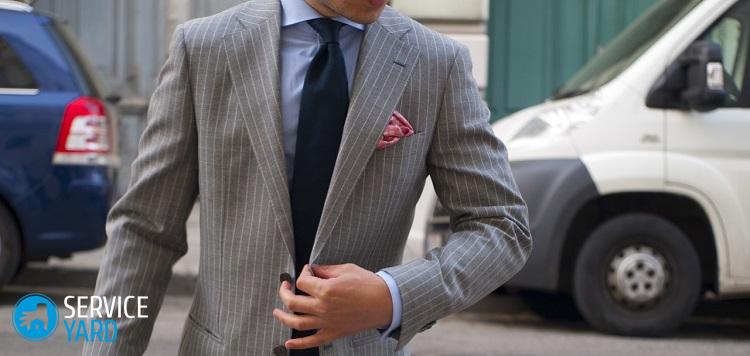
Features of the ironing process of various materials
In addition to the standard rules, there are a number of additional recommendations of manufacturers of classic costume clothes on how to iron this or that fabric.
Wool jacket
A feature of clothing made of wool is that it can stretch or sit down. Therefore, in order to avoid stretching the seams and material, the iron must not be carried in detail. Place the device first in one place and then in another.At the beginning of the ironing procedure, the product should be slightly moist - and at the end - almost dry.
Important! If the jacket is left dry, shrinkage may occur. If the product has sat down during washing, then during ironing you can intentionally stretch it a little.
Velvet jacket
It is necessary to iron a jacket made of pile fabric with special care so that it does not lose its appearance. A velvet jacket should be ironed only in the direction of the pile and from the inside. Place the front part of the product not on the board, but on a piece of fleecy fabric or a towel.
Follow these guidelines when flattening corduroy fabric:
- Do not dry the product.
- Do not iron the jacket wet.
- To avoid stains, do not splash water on the front of the product.
- For the ironing procedure, use a Teflon sole with a steamer.
- Iron only from the inside out.
- Do not press hard on the iron so as not to deform the material pattern.
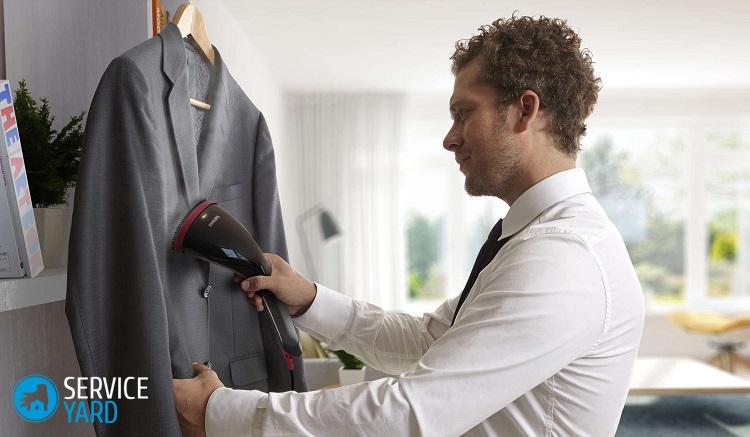
Linen jacket
As a rule, linen products crumple very quickly, and it is difficult to iron. High temperatures for flax products are contraindicated. It is best not to iron or iron the linen jacket at all without letting the product dry completely (for example, immediately after washing). Make ironing from the wrong side.
Since the linen jacket has no lining, this will facilitate the complex process of straightening the folds and creases on it. In addition, if the jacket made of flax is slightly wrinkled and does not look perfect, it should be remembered that light bruising for such products is the norm.
How to iron a leather jacket?
Often, leather products wrinkle after long storage in cabinets, lose a respectable appearance. If you doubt your abilities, don’t know how to choose the appropriate way to iron a leather product, then use the dry cleaning services. We suggest that you familiarize yourself with several methods of ironing leather things at home, however, you must resort to these tips very carefully, since the skin is both natural and artificial, very delicate material. If the ironing process is not carried out correctly, then it can be ruined.
Important! It is better not to use the iron when smoothing leather things. However, if you want to use this device, set the temperature mode to minimum, and cover the product with a thin layer of “Kraft” paper, and drive the iron over it, but not over the skin.
Cold way
The easiest and easiest way to straighten a leather jacket. Just hang the item on a coat hanger and let it stretch out. If the product has unwanted creases or creases, then in the process of drawing out the flaws will be eliminated by themselves.
The disadvantage of this method:
To iron a coat or jacket in this way, it will take an average week, although one or two days will be enough for thin leather material.

Steam way
Direct water contact with the skin is highly undesirable, but steam treatment is recommended. Processing the product is very simple: fill the half of the bath with hot water and hang the desired thing over it.
Important! Keep an eye on the level of water evaporation, as excessive steam generation can adversely affect the product.
You can also use a manual steam generator for steam processing. The maximum height of the device above the product is 10 cm. The device can also be replaced with an iron having the function of a steam generator.
Vaseline and peanut butter as an equalizer
The most gentle of all methods is the method of leveling a leather product with petroleum jelly or peanut butter.
The processing process is as follows:
- Moisten a cotton swab (disk) with petroleum jelly.
- Swab all the problem areas of the product.
- Hang the jacket on your shoulders.
- Take the product out for 2 hours in a well-ventilated place (balcony, loggia, etc.)
to contents ↑Important! Vaseline can be replaced with peanut butter, but this is a rather expensive product, and not every city sells it.
Stock footage
We hope that thanks to our article, you have ironed your jacket correctly, you have no more questions, and your product shines with cleanliness and a beautiful view.




